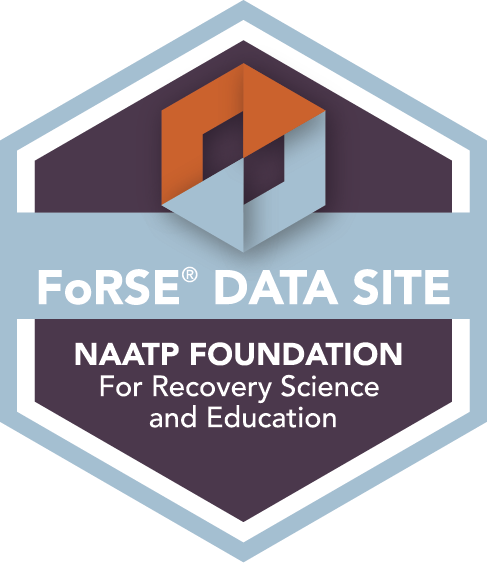
Opioid addiction has evolved from a minor urban problem to a nationwide public health crisis over the past decade. However, from 2019 to 2020, drug overdose deaths have risen nearly 30%. The Centers for Disease Control (CDC) reports that opioids caused close to 75% of those deaths. With the rise in synthetic opioid consumption, or manufactured drugs that produce a similar reaction to natural opioids, the opioid abuse epidemic is only getting worse. Understanding the risk, signs, and treatment options can prevent developing a problem with opioids or help someone who may be struggling with it already.
Identifying Opioids
Opioids are drugs that interact with the opioid receptors in the brain and body to alleviate pain and produce a sense of euphoria. While opioids can effectively manage acute pain, chronic use can lead to significant health problems, dependence, or even addiction.
Prescription opioids such as oxycodone, hydrocodone, and fentanyl, commonly prescribed for managing acute and chronic pain, have significantly affected the current opioid crisis. However, overprescribing and improperly using these drugs are leading to widespread addiction in many communities. Additionally, individuals addicted to prescription opioids may transition to illicit opioids, such as heroin, when their access to prescription drugs becomes restricted. This is why seeking treatment as soon as possible is extremely necessary.
The Difference Between Opioid Addiction and Dependence
When you’re dependent on a substance, you’ll start noticing physical withdrawal symptoms when the use of it is reduced or stopped abruptly. Opioid dependence is characterized by a change in tolerance, where higher doses are needed to achieve the desired effect. You’re also susceptible to dependence when opioids are taken as prescribed under medical supervision.
On the other hand, opioid addiction involves physical dependence, psychological cravings, and compulsive drug-seeking behavior. When a reliance crosses the line to become an addiction, it’s characterized by the inability to control opioid use despite negative consequences, such as deteriorating health, strained relationships, and legal problems. It goes beyond physical dependence to include the compulsive, harmful behaviors associated with drug-seeking and drug use.
Risks Factors of Opioids
While anyone is susceptible to developing a dependence or addiction to opioids, some factors can increase a person’s risk. Below is a description of a few that are the most common:
- Genetic Predisposition: Certain genetic factors, like variations in the OPRM1 gene, can increase an individual’s vulnerability to developing opioid addiction. A family history of substance abuse or addiction can increase risk.
- Chronic Pain: Chronic pain conditions may be prescribed opioids for pain management. Many of these conditions are developed after a sudden injury, like a fall or impact from a car accident. Prolonged exposure to opioids in these situations can increase the likelihood of developing dependence and addiction.
- History of Substance Abuse: Individuals with a history of substance abuse, whether with opioids or other substances, are at a higher risk of developing opioid addiction and dependence. If you’ve used any sort of pain medication for a prolonged period or a recreational drug, you could have a higher risk for opioid dependence.
- Mental Health Disorders: Mental health disorders, such as anxiety, depression, or post-traumatic stress disorder (PTSD), can increase the risk as well. Opioids may be used as a form of self-medication to alleviate emotional distress or to deal with other mental health symptoms. However, a diagnosis isn’t necessary for this risk to occur.
- Socioeconomic Factors and Environment: A person’s physical and social environment heavily influences the risk of developing an addiction to opioids. Peer pressure, social norms that condone drug use, and exposure to individuals who misuse or sell opioids are common examples of situations that impact. Other socioeconomic factors, such as poverty, unemployment, and lack of access to healthcare and treatment resources, can contribute to the risk of opioid addiction.
Effects of Prolonged Opioid Use
Naturally, there are consequences to prolonged opioid use – both short-term and long-term. In the short term, individuals may experience euphoria, an intense pleasure or happiness. However, using opioids can also make you drowsy. These effects are often accompanied by side effects such as constipation, nausea, and respiratory depression. Long-term effects of opioid dependence and addiction can have profound consequences. As mentioned earlier, developing a higher substance tolerance increases the risk of respiratory depression and overdose. Personal and professional impacts are also commonly disrupted, causing strained relationships and financial difficulties.
A person’s mental health is at risk, with increased rates of severe anxiety, depression, and cognitive impairments. Physiological changes like hormonal imbalances, decreased immune function, liver damage, and gastrointestinal issues are among the potential health consequences. Injecting opioids intravenously, which is common among some opioid users, carries additional risks, such as the transmission of blood-borne infections like HIV and hepatitis C.
If left untreated, opioid dependence or addiction worsens over time – and so do the effects.
Finding Opioid Addiction Treatment Near You
Finding the best treatment for opioid addiction is essential to address the short-term and long-term effects. Individuals struggling with addiction or dependence deserve support in their journey toward recovery and improved well-being; getting the help they need gives them a better chance of a successful recovery.
At American Treatment Network, one of our top priorities is offering immediate care and access to those who need it. Our holistic approach, when combined with evidence-based practices, including opioid and alcohol addiction treatment and mental health services, effectively treats substance abuse problems. Learn more about any of our services that are available at each of our four locations: Haverton, PA, Upland, PA, Newark, DE, and Dover, DE.


